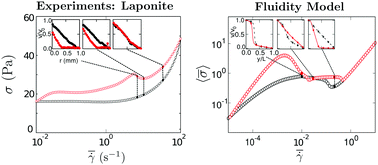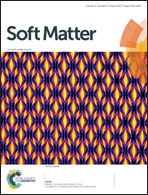Understanding rheological hysteresis in soft glassy materials†
Abstract
Motivated by recent experimental studies of rheological hysteresis in soft glassy materials, we study numerically strain rate sweeps in simple yield stress fluids and viscosity bifurcating yield stress fluids. Our simulations of downward followed by upward strain rate sweeps, performed within fluidity models and the soft glassy rheology model, successfully capture the experimentally observed monotonic decrease of the area of the rheological hysteresis loop with sweep time in simple yield stress fluids, and the bell shaped dependence of hysteresis loop area on sweep time in viscosity bifurcating fluids. We provide arguments explaining these two different functional forms in terms of differing tendencies of simple and viscosity bifurcating fluids to form shear bands during the sweeps, and show that the banding behaviour captured by our simulations indeed agrees with that reported experimentally. We also discuss the difference in hysteresis behaviour between inelastic and viscoelastic fluids. Our simulations qualitatively agree with the experimental data discussed here for four different soft glassy materials.



 Please wait while we load your content...
Please wait while we load your content...